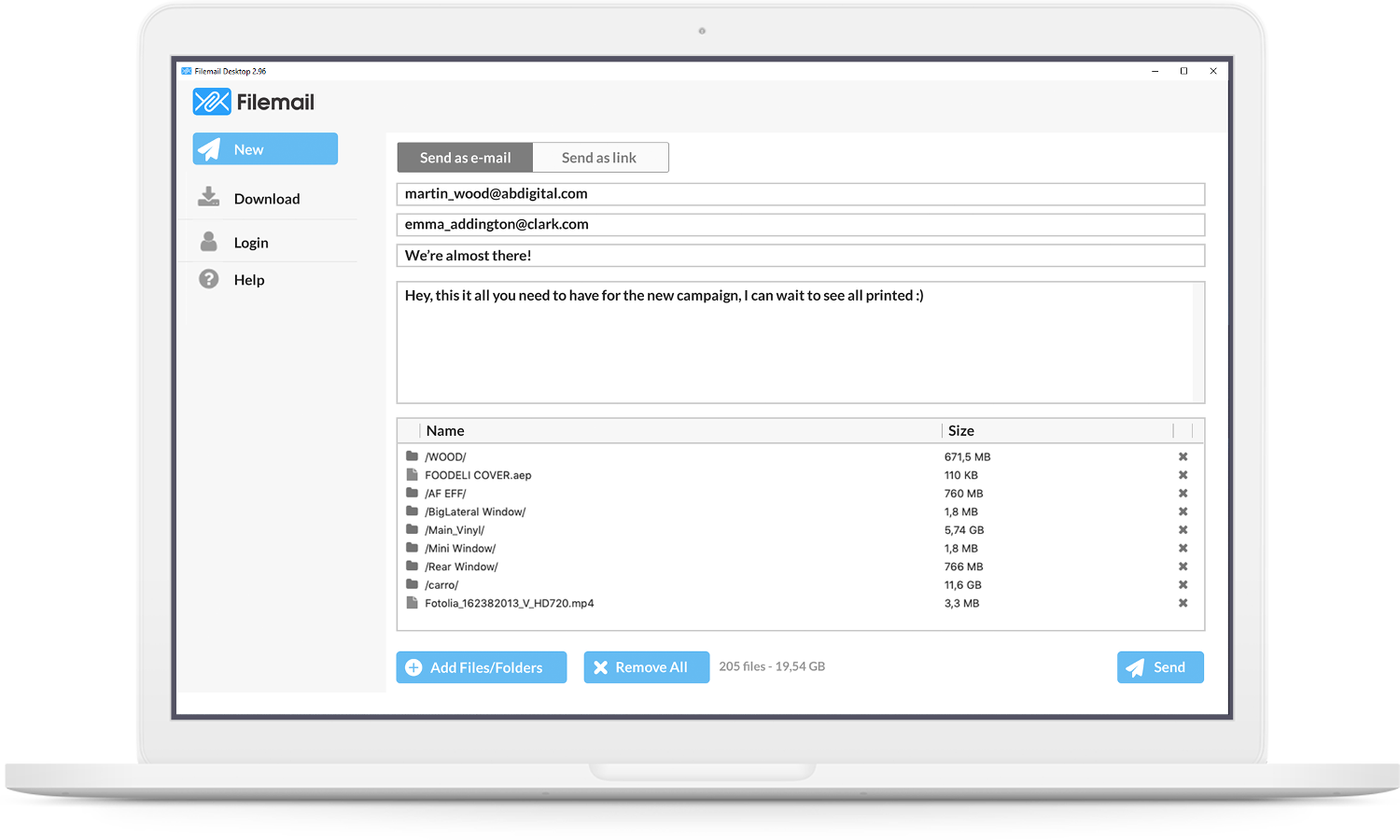
#Download from filemail download#
They get a fast download link in their e-mail. People you send to don’t have to struggle with noisy download sites. Unlike cloud sharing, you don’t have to fiddle with shared folders. The fastest and simplest way to send and share your photos/videos from your iPhone and iPad.įilemail lets you send your pictures and videos from your iPhone or iPad to any e-mail for free.
#Download from filemail free#
*** Sending is free and does not require any registration! *** When an account expires, all data is deleted after 90 days of inactivity.*** Over 10 million people worldwide are using Filemail *** This addresses the common SaaS security concern of not knowing where data centers are located. The files uploaded in Filemail are also stored in the region where the user/account is located or can be stored in a region chosen by the user. For example, users can request a data dump of all their information and they can delete all their data anytime. This makes it a more secure platform when it comes to handling personal data. This is a very helpful feature especially for business-sensitive files being exchanged between employees and vendors/suppliers.įurthermore, Filemail is GDPR-compliant. All downloads, uploads, opened emails, logins, and logouts are tracked and ready for administrators to review. This added security can be used when both sending and receiving files.Īctivities in Filemail are also fully audited.
#Download from filemail password#
This is an extra layer of protection where your recipient receives a password via SMS to access the files. When sending confidential files, you can turn on the two-factor authentication (2FA) feature. SAML and SSO standardize communication between users and verify a user’s identity and their access to use the service. These security features allow for a much simpler way to manage login into different websites, apps, or services like emails or content management systems. Businesses can have their own custom subdomain and integrate Filemail into their websites so users can upload and download files without leaving the website.Īmong the advanced features included in the Enterprise plan are the Security Assertion Markup Language (SAML) and Single Sign-On (SSO), which are important IT security features. Image files like JPG, GIF, BMP, and PNG also get thumbnail previews.

They’ll be able to see when the file was opened, the location from where it was accessed, and the recipients.įile format won’t be an issue with Filemail since it can handle any file type-documents, images, videos, etc. Users can check the status of each file they’ve sent and receive real-time updates on the delivery details. Aside from security features, the file-sharing platform also includes file tracking capabilities. Moreover, Filemail implements Security Assertion Markup Language (SAML) and Single Sign-On (SSO) security features, which are important for identity management and secure access.

Filemail meets various industry standards for data security, including GDPR, HIPAA, ISO27001, SOX, FISMA, GLBA+, and GPG13. Security is assured through the software’s HTTPS encrypted data transfer, two-factor authentication, and password protection to prevent unauthorized access.

With a free account, users can transfer up to 5GB and the files will be available for seven days. This can save a lot of time and increase employee productivity as 92% of employees review and collaborate on documents via email. Overview of Filemailįilemail is a full-featured file-sharing platform where users can easily send large files right in their email or through a secure link. Below, we discuss some of the inclusions of the Filemail subscription plans to help you gauge which one works best for your operational requirements. This only goes to show how important it is to use reliable file-sharing tools like Filemail. This is followed by exfiltration of sensitive data at 59% and tying at 49% are unauthorized access and insecure interfaces/APIs.

According to one survey of cybersecurity experts, misconfiguration of cloud security remains the biggest cloud security risk, with 67% of respondents agreeing. Around the globe, 70% of organizations hosting their data or workloads in the public cloud experienced a security incident. However, one of the most pressing challenges of using cloud file sharing is security.


 0 kommentar(er)
0 kommentar(er)
